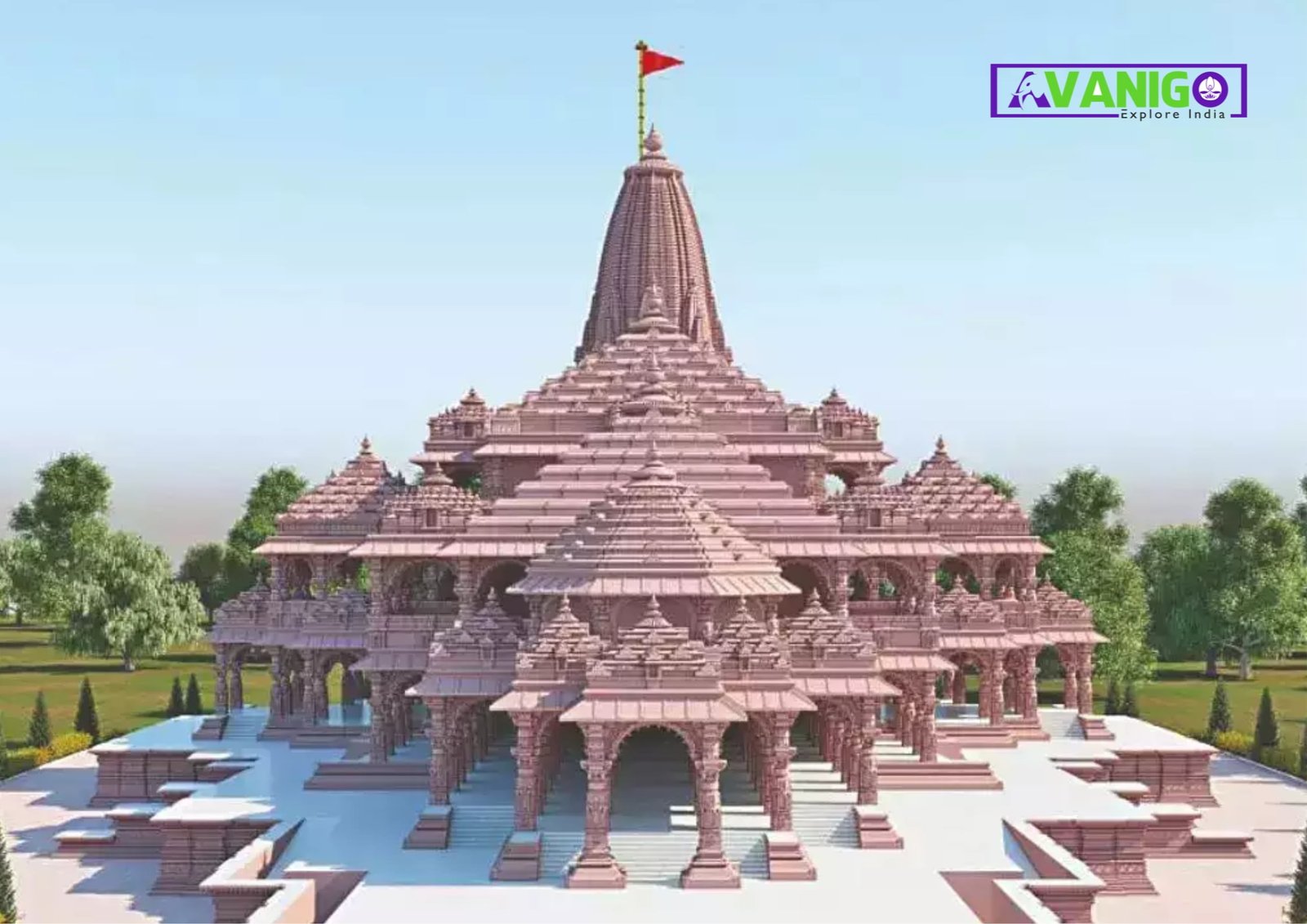The name Ayodhya holds immense religious and cultural significance rooted in Hindu mythology. Steeped in history as the birthplace of Lord Rama, it has attained a mystique that draws millions in reverence. For millennia, devotees have flocked here to catch a glimpse of where it is believed Lord Ram first drew breath. As a feather in the cap, the spectacular new Ayodhya Ram Mandir elevates this pilgrimage into a soul-stirring multisensory experience like no other. Let’s explore why Ayodhya and Ram Temple in Ayodhya are so profoundly divine.
Quick Navigation
A Glimpse into the Past
The location holds significance as it’s believed Lord Rama was born here to King Dashrath and spent his early years. In the year 1528, Babur, who was the Mughal emperor, demolished this temple. Constructed the Babri Masjid, which was a mosque in its stead.
As a consequence of this event, an extensive legal dispute over land ownership ensued between the Muslim and Hindu communities. Only in 2019, following decades of legal proceedings, did the Supreme Court finally decide to provide the land for the construction of Ram Mandir in Ayodhya.
Varanasi Ghats: Revealing another dimension of life
Spiritual Retreats in India That Relax Your Soul
Rise of the New Ayodhya Ram Mandir
The construction of Ram Temple in Ayodhya is one of the most significant events in India after Independence. Spread over 2.7 acres, the new complex encapsulates the rich architectural Heritage of North India in its Nagara style. Sourced from the pink city of Jaipur, sandstones have been intricately engraved to adorn pillars, walls, and floors. Within the sanctum stands the 1.25-foot iconic silver throne of Ram Lalla, representing his divine infant form.
The Ayodhya temple spires soar to a peak height of 161 feet. Each floor has a distinct design and purpose – the ground level houses the central shrine, while the first floor enshrines Lord Ram. The second floor is dedicated to Lord Hanuman, and the third serves as a museum.
The expansive courtyards are circumambulated by continuous channels and 108 ornately carved pillars. Impressive seven-tiered gopurams mark the entrances through the fort-like perimeter walls.
Special emphasis has been laid on acoustics, natural lighting, structural strength, drainage and raising the base above floodplains. Modern technologies have also been incorporated with environmental concerns in mind.
Intricate marbles and centuries-old construction techniques using rare woods merge seamlessly with innovative materials. Ram Mandir in Ayodhya aims at sustainability and accessibility for all.
Key Highlights of the Temple Precinct
To accommodate the massive influx of pilgrims expected to visit once complete, the Ayodhya temple grounds have been thoughtfully planned with several auxiliary structures and amenities. Some noteworthy aspects include:
- Ram Darbar: The inner sanctum housing the deity of infant Ram Lalla encased in silver and idols of his divine family.
- Sculpture Gallery: A museum showcasing a rare collection of artefacts, sculptures and exhibits from the Ramayana period.
- Yagya Shala: A spacious platform for conducting important rituals and religious ceremonies.
- Ram Katha Hall: A 2500-seat auditorium for weekly discourses on Ramcharitmanas and moral stories.
- Cafeteria: A hygienic large-scale kitchen serving traditional Prasad for thousands daily.
- Bookstore: Exclusive outlet for holy texts, publications, souvenirs and devotional goods.
- Facilities like parking, lockers, wheelchairs, first-aid, and clean amenities bolster the spiritual experience.
From elaborate wall carvings to three-floored grandiosity, every detail reflects its historical and mythological significance.
Mesmerizing facts about Jagannath Puri Temple, Odisha
Ayodhya Ram Mandir Temple Architecture
As per the guidelines of Vastu shastras, some striking design elements incorporated manifest Hindu belief systems:
- Raised Sabha mandapa signifies spiritual enlightenment above worldly matters.
- Successive sloping roofs of lesser heights depict the descent of divinity towards humanity.
- Dominating Shikhara pinnacles establish the temple as the highest point, drawing the mind to the supreme.
- Symmetrically aligned pillars upholding massive structures symbolize the virtue of balance.
- Bronze gates depicting scriptural scenes provide snapshots of moral lessons.
Together, these nuanced architectural nuances infuse profound theological philosophy within its magnificence.
Salient Features of Ayodhya Ram Temple
Ram Mandir in Ayodhya intricately demarcates spaces for key aspects through symmetrical and structured design:
- Garbhagriha: Innermost chamber housing Mool Peeth of Ram Lalla.
- Antaral: Transition area separating the holiest region from public space.
- Nritya Mandap: Pillared dancing hall acting as temple courtyard.
- Sabha mandap: Elevated assembly hall for religious ceremonies.
- Ardha Mandap: Semi-circular transitional hallway.
- Mukh Mandap: Impressive pillared entrance porch with carved lintels and massive rangolis.
Together, these functional yet aesthetically striking segments facilitate rituals while instilling spiritual purity.
The Significance of the Name Bharat: The Story Why India’s Name is Bharat
The Blissful Power of the Rama Nama
The Ambubachi Mela of Assam Kamakhya Temple
Significance of the Ram Mandir
Beyond its apparent religious importance as Lord Ram’s birthplace, the Ayodhya Ram Mandir holds deep symbolic significance for Hindus worldwide:
- It marks the restoration of Hindus’ historical rights over the site after centuries of conflict.
- Celebrates the virtues of Sanatan Dharma and values through the immortal story of Lord Ram.
- Revives lost ancient traditions and re-establishes Ayodhya’s spiritual glory.
- Strengthens cultural roots by preserving the legacy of India’s rich shared history and faith.
- Inspires sacrifice, righteousness, duty and moral values through Ram Katha recitation.
For millions of devotees, the Ayodhya Temple will serve as an eternal centre of pilgrimage connecting them to this pious land.
Finalizing Construction
The towering high Kalash Point and the remaining architecture are taking final shape according to the ancient principles. Arrangements are underway for a grand opening ceremony in the presence of heads of state, holy men and masses of devoted followers. With digital tokens sold in huge numbers already, Ayodhya temple slated to become one of the most visited Hindu sites on the world religious map.
Grand inaugural ceremonies are scheduled on 22 January 2024, where the sacred process of Prathista will establish the deities. With digital token booking already live, the re-opening has generated tremendous enthusiasm among devotees to visit the restored birthplace of Maryada Purushottam Lord Shri Ram.
Facts about Jagannatha Rath Yatra
How to Reach Ram Temple Ayodhya
Ayodhya is situated in Uttar Pradesh’s Faizabad district, around 140km from Lucknow. The upcoming Ayodhya International Airport is 8km from the city centre. Regular bus and train services connect it to major cities in North India.
Ayodhya Ram Temple Timings:
The Ram Temple Ayodhya would remain open from 6-12 am and 3-9 pm. On essential festivals like Ram Navami, Dusshera, Diwali, and Krishna Ashtami, timings may be extended.
Ayodhya Mandir Pooja Rituals:
Visitors can participate in Mangla Aarti at sunrise and Shringar Aarti in the evening. Special donations and rituals like Abhishek and Sahasranam are also conducted regularly.
Places to visit near Ayodhya Temple:
Saryu River ghats, Hanuman Garhi, Naya Ghat, and Ramkatha Park are among other sites of importance related to the Ramayana nearby. Bharat Milap Park and Guptar Ghat offer scenic views of Ram Temple Ayodhya.
Transforming Ram Mandir in Ayodhya into a Global Pilgrim Destination
Some significant initiatives of Ram Temple Ayodhya underway are:
- Doubling the width of roads across Ayodhya for smooth traffic flow
- Building a new modern Ayodhya railway station
- Developing Guptar Ghat on the lines of Haridwar’s riverfront
- Setting up an airport named Maryada Purushottam Sriram Airport
- Constructing 3–4-star hotels for comfortable stay of devotees
- Providing free transit service within Ayodhya through e-buses
- Revamping sewage treatment and waste management systems
The grandeur of the Ram Mandir – A Befitting Tribute to Lord Ram
The construction of Ayodhya Ram Mandir restores Hindus’ pride by realizing the long-pending dream of a grand temple at Shri Ram Janmabhoomi. Merging ancient Indian architectural splendor with modern facilities symbolizes India’s rich religious and spiritual heritage.
With its impending opening, the temple heralds the resurgence of India’s spiritual and cultural preeminence by establishing Ayodhya once more as ‘Maryada Purushottam Ram ki Nagari’. Indeed, this marvel exemplifies the glorious tradition of the finest Indian craftsmanship merged with religious fervor to create a landmark of faith for generations.
Swetha is a Content Specialist, LinkedIn Branding and B2B Marketing Consultant. When she is not in the world of B2B, she researches the roots and beauty of Indian Culture and Traditions. She is the author of the book: 365 Days 365 Posts – The Guide to LinkedIn Personal Branding, available exclusively on Amazon. Connect with her on LinkedIn.

